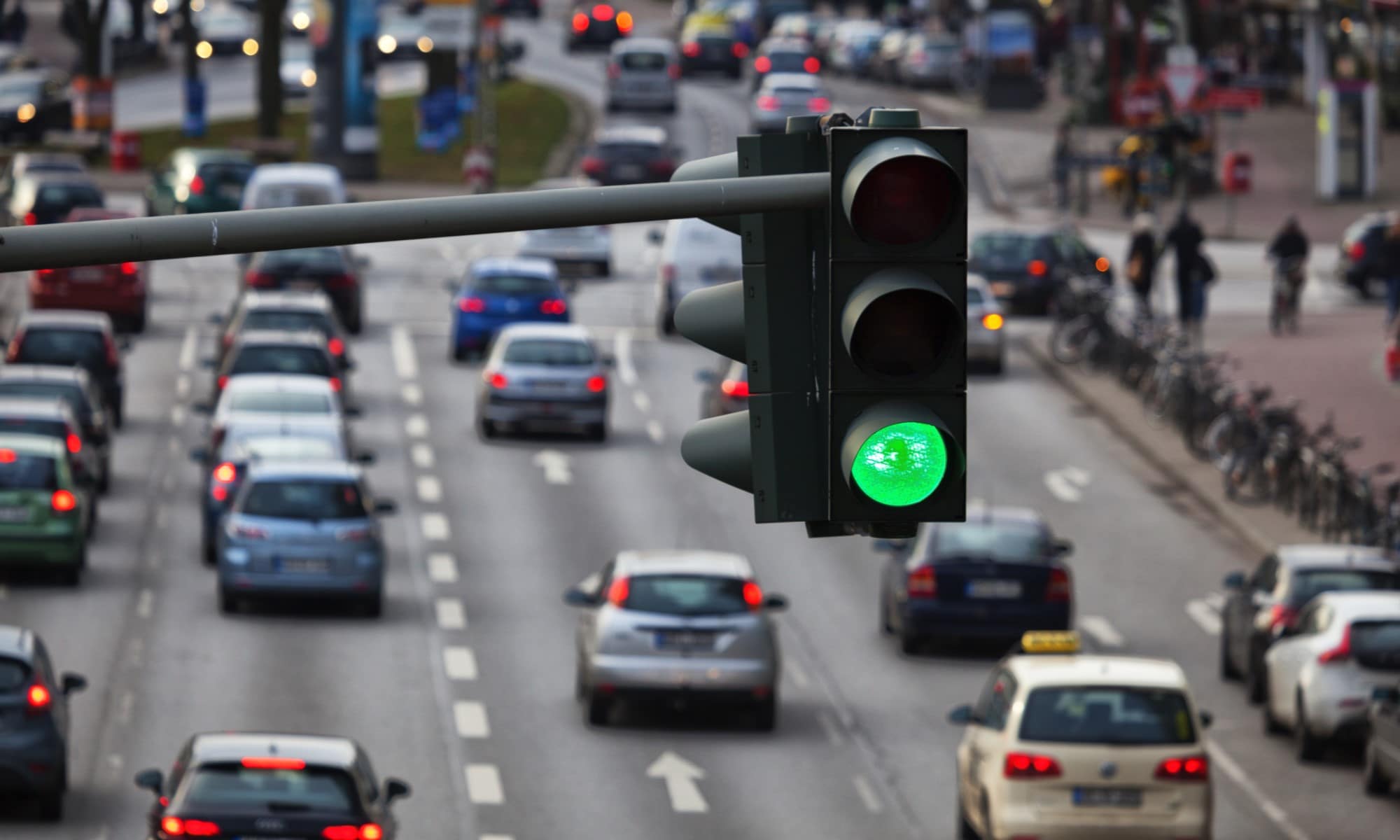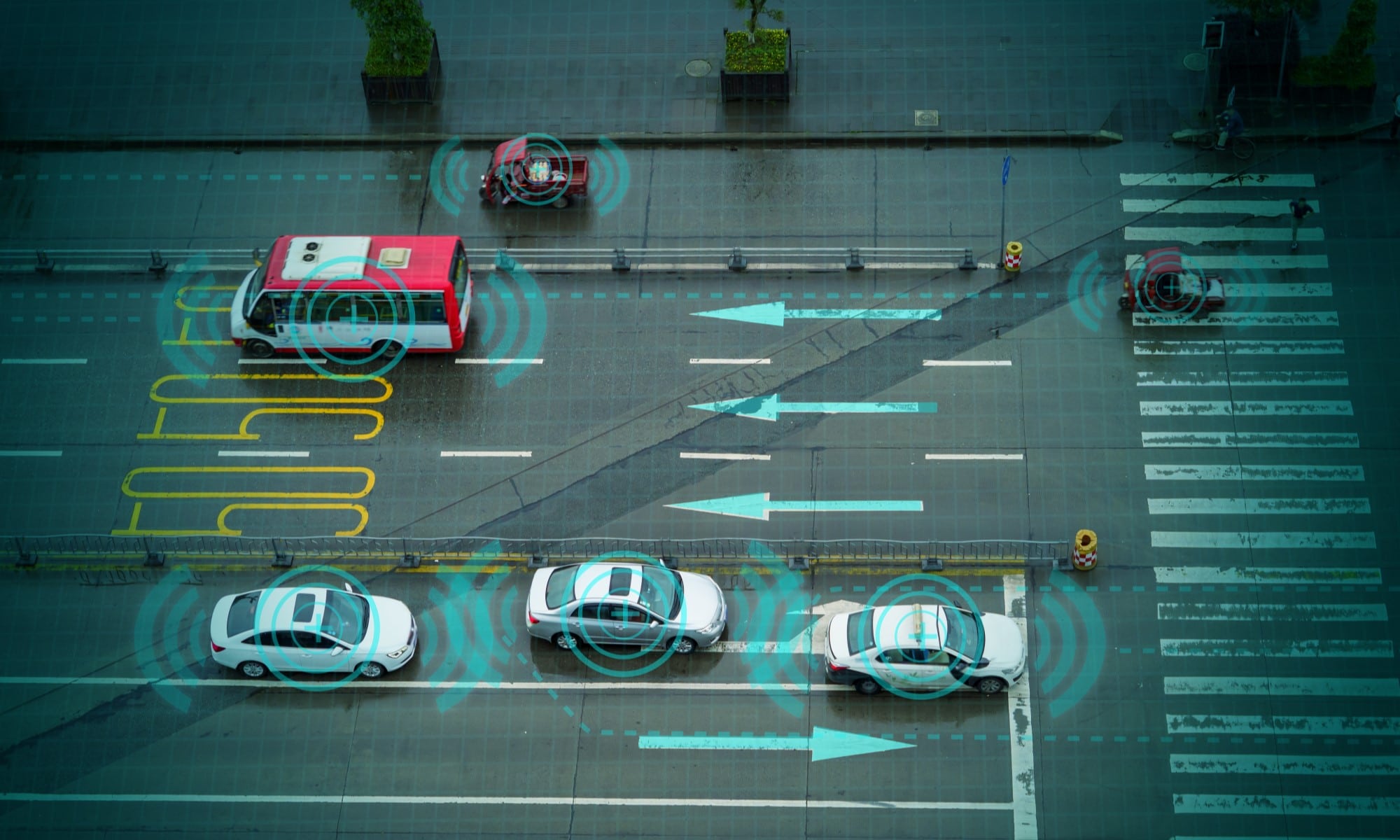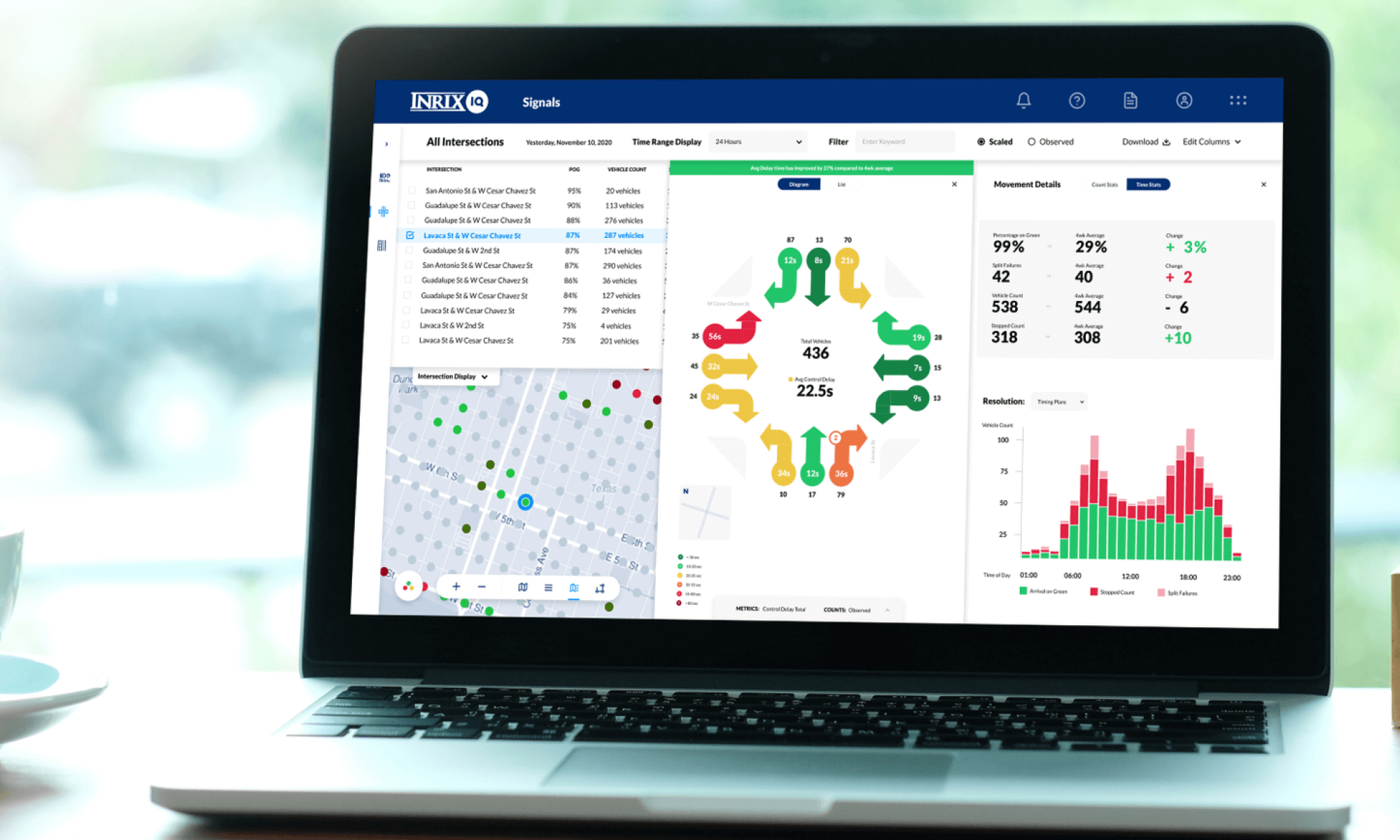
Climate change is accelerating the universal goal of drivers everywhere to reduce carbon emissions each year. How can intersection analytics systems aid in reducing our carbon footprint? The addition of intelligent transportation systems technology enables people to make changes to a public space for the betterment of community members and the environment at large.
Internal-combustion engines that run on diesel or gasoline emit gasses, fumes, and vapors from the cylinders. The implications of these vehicle emissions in the US are significant. They are responsible for a significant part (1/5) of all greenhouse gasses that trap heat in the atmosphere and cause global temperatures to rise.
Reducing vehicle emissions positively impacts the environment and public health and safety, as it lessens not only greenhouse gas emissions but also air pollution. Like all global-scale challenges, the best way to overcome the challenge is to attack it from many different angles.
While the adoption of electric vehicles and their EV charging stations can positively impact vehicle emissions, it’s only one solution. Optimizing traffic flow with intersection analytics is another intelligent mobility solution that can significantly reduce vehicle emissions within a targeted area.
What Is Intersection Analytics?
So what is intersection analytics then? Intersection Analytics is a process that evaluates traffic information from multiple data sources at a single or series of intersections to view and analyze movement to optimize traffic flow. This data analytics optimization delivers a multitude of benefits to the public, from decreasing vehicle emissions (up to 20%) and improving safety by reducing vehicle and pedestrian accidents to shortening commute times and alleviating driver frustration.
How can data optimize traffic flow? For example, INRIX provided municipalities in Austin and Los Angeles with billions of data points from multiple sources that allowed the agencies in each city to predict the impact of better management of red-light traffic signal timing. By simply retiming a series of traffic signals on well-traveled corridors, Austin commuters save 7.5% of travel time. Similarly, a Los Angeles retiming project reduced travel time by an impressive 9% without changing their activities. Saving travel time creates a better experience for drivers and pedestrians while decreasing the number of vehicle emissions, which helps reduce greenhouse gasses that contribute to climate change.
To gain predictive insights that model outcomes with certainty, transportation planners must leverage the intersection analytics software platform to collect, view, and evaluate multiple location data points. Understanding the local planning context and specific gathering places in urban locations can positively impact intersection functions. For instance, although traffic engineers installed traffic cameras in one Oregon corridor, it took public feedback to convince the agency that the corridor experienced significant congestion at night. Using multiple sources of raw location based data, INRIX quickly enabled Washington County to leverage data analysis to visualize and institute a smart corridor analysis project to alleviate the congestion challenge.
How Is Intersection Analytics Data Collected?

Not all intersection analytics systems data is created equal. Many legacy methods still in use today rely on the significant investment in automated hardware systems and fieldwork to gather intersection data for input and analysis. These approaches gather specific data such as the number of approaches, crash incidents, and safety effectiveness of left- and right-turn lanes.
Today’s world of big data creates new, innovative opportunities to look at collecting intersection analytics data. INRIX, for instance, created the first cloud-based traffic signal software tool to transform its trillions of data points from connected cars into actionable insights. It helps give traffic professionals the ability to enhance traffic flow by making meaningful decisions backed by predictive data analysis.
Leaning into intersection analytics worldwide can significantly reduce vehicle emissions by up to as much as 20%. It also improves urban mobility, so city and state agencies can address community desires by giving back precious hours to a time-strapped public and gaining valuable trend insights into the drivers of activity and real-time movements of a population.
Why Is Intersection Analysis Important?

While experts focus much of the attention surrounding intersection analysis on reducing greenhouse gas emissions, the underlying need for traffic safety technologies extends beyond the ominous challenges of climate change. Every city’s mobility action plan and state governments must address the needs of the community in ways that move more people more efficiently while addressing safety concerns. The broader goal is to improve and sustain the quality of life for all community members by creating a network of transportation services that is both safe and accessible, no matter the mode of transportation.
To make these goals a reality, various city agencies and state governments must work to tackle this multi-year project in phases. When these entities can accurately document critical information like dangerous roadway behavior and gain an understanding of the relative importance of each movement, they can develop a comprehensive understanding of road user behavior to answer specific questions like the placement of transit stations and the location of bus stops.
Access to quality intersection analytics is a must-have for transportation and logistics agencies and city, county, and state governments to work to hit their carbon emissions targets while improving urban mobility and gaining insights into the movement of a population. For instance, the April 2022 INRIX US Signals Scorecard, the first and only systemic nationwide analysis of individual traffic signal performance using INRIX Signal Analytics (our traffic signal software), provides a snapshot into the signs of the pandemic recovery, traffic signal performance metrics in all 50 states, and the Top 10 best and worst-performing MPOS and counties. Press releases, such as this 2021 Global Traffic Scorecard, identified and ranked congestion and mobility trends, collision trends, and last-mile speeds in more than 1,000 cities across 50 countries on 7 continents.
What to Look for In Intersection Analytics Data?
Evaluating the virtues of data companies and comparing them can be overwhelming. Many sales presentations layer in triggering buzzwords like analytics, real-time, and even artificial intelligence to woo prospective buyers who don’t specifically have a degree in data analytics. So what do you look for when choosing an intersection analytics data company?
Understand the source of the data and how it’s collected. Decide if you need to invest your money on hardware equipment and sensors that provide a single source of data or if you’d prefer to tap into a traffic signal software solution that uses multiple points of accurate big data metrics to deliver mobility insights at a fraction of the cost. Many software solutions also provide historical data points, so ask for the earliest collection date to compare the extent of available history.
Compare the “big numbers.” How many miles of roadway or data points does the software vendor process? More data points in your area of interest mean better quality data.
Evaluate the available metrics. Since you need metrics to identify performance issues, and you don’t always know what you don’t know, comparing the available metrics can be a valuable exercise in determining the best choice for you.
Review the dashboards and ways to explore your data. To find actionable insights, you need to intuitively evaluate the data sets and share the results with stakeholders without hassle. Consider what you want to know and evaluate which intelligent mobility solutions can answer those questions most easily without the hassle of custom reporting.
Critically review mobility case studies. While many alternative data companies can share a story of success, closely evaluating the details of the case study can provide clues into how big of a role the software had in the success of a project.
How to Find Intersection Analytics Data
All businesses and agencies that support or rely on the movement of the public across traffic intersections can benefit from intersection analytics data to optimize decisions about how to improve the use of the surrounding public spaces. This data helps improve quality of life on a micro-level, in the way that a new design of traffic signal timing can shorten commutes to a macro level where vehicle emissions are reduced, resulting in lowered greenhouse gas emissions to mitigate the impact of climate change.
While every stakeholder has good intentions to make decisions that improve their quality of life, those decisions are only as good as the quality of the data and the predictive analytics that help bring the actionable insights to the forefront. Supporting a project filled with good intentions only to discover it doesn’t perform as well as expected is a painful lesson that can be avoided by choosing the right software solution from the beginning.
Intersection Analytics Software You Can Rely On

Because INRIX makes mobility smarter, greener, and safer by providing mission-critical mobility services to generate actionable insights, it’s earned its position as an industry leader. INRIX collects anonymized data from people, cities, vehicles, and roads to help cities, transportation agencies, financial services companies, delivery and logistics businesses, retailers, and more tackle global mobility challenges so they can expand and scale while mitigating unnecessary risks due to data reliability.
INRIX counts 1000+ world-class brands, cities, and transportation agencies as satisfied customers. From automotive giants BMW, Toyota, and Honda to iconic cities like New York, London, and Los Angeles, customers turn to INRIX for unmatched comprehensive intelligent mobility solutions. INRIX is more than a data broker, mapping company, or vertical solution. INRIX is uniquely positioned in the intelligent mobility SaaS landscape to provide the largest data pool and mobility services available.
To learn more about how INRIX’s traffic signal software, Signal Analytics, can help your organization use intersection analytics to attain its goals, sign up for a free demo today.




